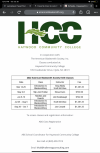Stacy E. Apelt - Bladesmith
ilmarinen - MODERATOR
Moderator
Knifemaker / Craftsman / Service Provider
- Joined
- Aug 20, 2004
- Messages
- 38,271
I'll give you my advice. Get what you can afford and start making knives.
There are people making very nice knives with only a charcoal fire and files.
There are people making pretty bad knives with $10,000 in equipment.
Posting your sketches and progress here in Shop Talk where many successful smiths can critique them and offer help is a good way to speed up the learning curve.
The skills needed to make a good knife are gained by practice and study, not by bigger and better equipment.
There are people making very nice knives with only a charcoal fire and files.
There are people making pretty bad knives with $10,000 in equipment.
Posting your sketches and progress here in Shop Talk where many successful smiths can critique them and offer help is a good way to speed up the learning curve.
The skills needed to make a good knife are gained by practice and study, not by bigger and better equipment.


